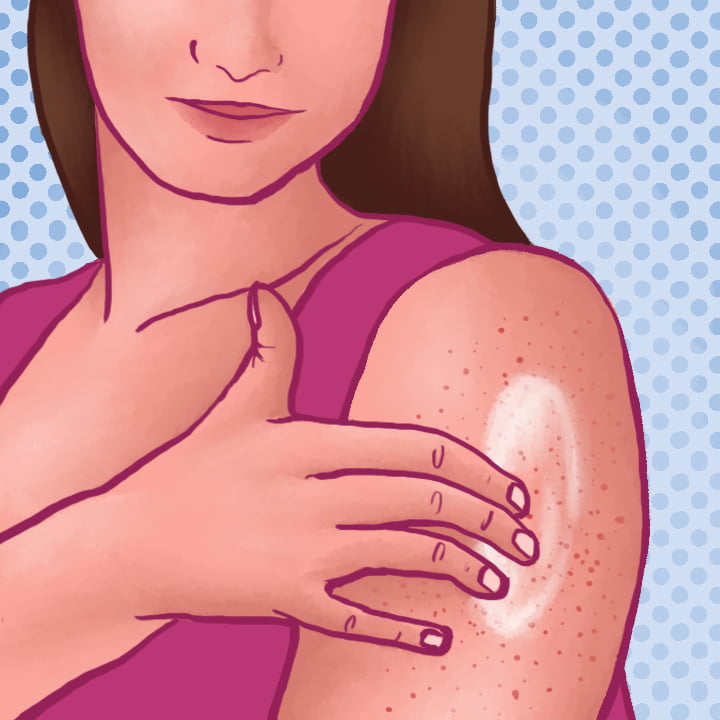Tips from board-certified dermatologists to help clear tiny, rough-feeling bumps on the arms and thighs
The start of summer means more tank tops and shorts, and for some people, a pesky new skin condition they may not have noticed before. Keratosis pilaris causes tiny, rough feeling bumps to appear on the skin, most often on the upper arms and thighs. According to dermatologists from the American Academy of Dermatology, this common and harmless skin condition affects people of all ages and races and occurs when dead skin cells clog the pores.
“Some people say the bumps look like goosebumps, chicken skin or strawberry skin, while others mistake the bumps for acne,” says board-certified dermatologist Mona Gohara, MD, FAAD. “While treatment isn’t necessary for keratosis pilaris, if the itch, dryness or appearance is bothersome, there are things you can do at home to help.”
To ease the symptoms and help you see clearer skin, Dr. Gohara recommends the following tips:
Keep baths and showers short. Spending too much time in the water can dry your skin and cause keratosis pilaris to flare. Limit baths and showers to five to 10 minutes and use lukewarm water.
Use a mild, fragrance-free cleanser. This will help avoid irritation when washing your skin.
Gently exfoliate skin with keratosis pilaris once a week. You can exfoliate using a skin care product called a keratolytic — a type of chemical exfoliator. Look for one that contains one of the following ingredients: alpha hydroxy acid, glycolic acid, lactic acid, a retinoid, salicylic acid, or urea. Take care to use the exfoliator exactly as described in the directions, as applying too much or using it more often than indicated can cause raw, irritated skin. In addition, avoid scrubbing your skin, which can make keratosis pilaris worse.
Moisturize your skin. Apply a thick, oil-free moisturizing cream or ointment immediately after bathing — when your skin is still damp — or whenever your skin feels dry. Look for one that contains urea or lactic acid. You can also use a humidifier to prevent dry skin. However, make sure to clean and disinfect your humidifier weekly to prevent the growth of harmful mold and bacteria.
Avoid shaving or waxing skin with keratosis pilaris. This can cause more bumps to appear. However, if you must shave the area, use a single-blade razor instead of a multi-blade razor.
“For many people, keratosis pilaris goes away with time,” says Dr. Gohara. “However, clearing tends to happen gradually over many years. If the bumps still bother you after trying these tips, make an appointment to see a board-certified dermatologist for a treatment plan that addresses your concerns.”
These tips are demonstrated in “How to Treat Keratosis Pilaris at Home,” a video posted to the AAD website and YouTube channel. This video is part of the AAD’s “Video of the Month” series, which offers tips people can use to properly care for their skin, hair and nails.
To find a board-certified dermatologist in your area, visit the American Academy of Dermatology’s website here.






